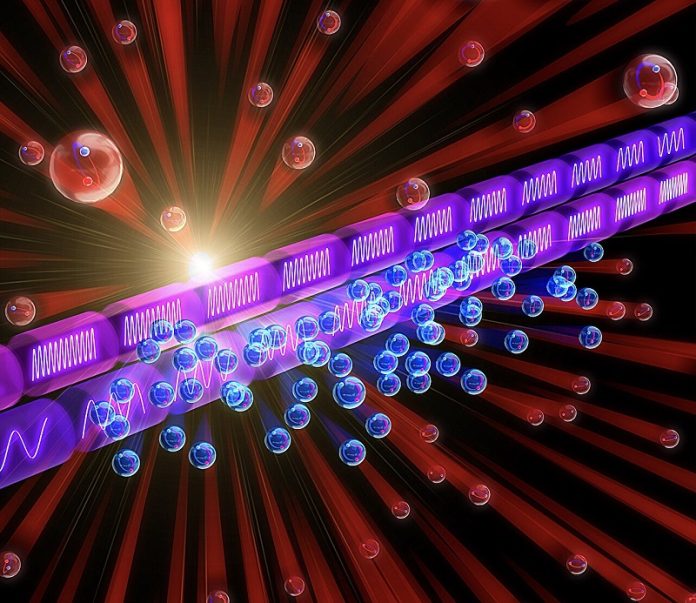
Researchers from the University of Tokyo have made an exciting discovery in antimatter research by cooling and slowing down an exotic atom called positronium.
Positronium is made of an electron and its antimatter counterpart, the positron, which has a positive charge.
This atom is unusual because it is made up of both matter and antimatter, and it only exists for a very short time before it breaks apart.
Despite its short life, positronium can help scientists explore the mysteries of antimatter, which could explain some of the universe’s greatest puzzles.
The findings were recently published in Nature, and the team, led by Associate Professor Kosuke Yoshioka, hopes their work will help other researchers study antimatter more closely.
Antimatter is the opposite of regular matter, sharing many of the same properties but with opposite charges. When matter and antimatter come into contact, they destroy each other.
While scientists believe the universe was created with equal amounts of matter and antimatter, most of the universe we see today is made of matter, leaving the fate of antimatter a mystery.
“Our study is a big step in understanding antimatter,” said Yoshioka. “We’ve successfully slowed down and cooled positronium, which is half antimatter, so we can study it more closely than ever before.”
Positronium is similar to a hydrogen atom, but instead of a proton, it has a positron. This makes it electrically neutral, but unlike hydrogen, positronium has no large nucleus and consists of only two particles: an electron and a positron orbiting each other.
This two-body system can be described with great accuracy using traditional physics, making positronium ideal for precise experiments.
For years, scientists have wanted to cool down positronium to study it in more detail, but this was a big challenge because positronium only exists for one-ten millionth of a second. It’s also extremely lightweight, so researchers couldn’t cool it using traditional methods like a cold surface.
Instead, Yoshioka’s team used lasers to slow down the positronium atoms.
While lasers may seem like a hot tool, they can also be used to cool. The researchers used finely tuned lasers to gently push against the positronium atoms, slowing their movement and lowering their temperature.
This process cooled positronium gas from 327°C down to just 1 degree above absolute zero (-273°C), the coldest possible temperature.
The experiment was so successful that Yoshioka believes the positronium gas might be even colder than their current measurements suggest. The team now hopes to expand the experiment by using lasers in three dimensions, which could allow them to study how gravity affects antimatter.
If antimatter reacts differently to gravity than regular matter, it could explain some of the mysteries surrounding the universe’s missing antimatter.
This breakthrough could open new doors for studying antimatter and help scientists answer fundamental questions about the universe.



